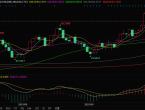EUR/USD
1.17741
0.185%
Gold
4310.78
0.129%
Oil
55.610
-1.586%
USD/JPY
154.735
-0.302%
GBP/USD
1.34246
0.357%
GBP/JPY
207.727
0.062%
U.S. Redbook retail sales annualized for the week ending December 12 were 6.2%, compared to 5.7% previously.Pfizer (PFE.N) CEO: Anti-vaccine sentiment is an anomaly, and we will continue to invest in vaccine development.On December 16th, analyst Anstey stated that U.S. manufacturing employment has fallen to its lowest level since March 2022—clearly not what the Trump administration wanted. There are currently no signs that policies aimed at bringing manufacturing back to the U.S. will effectively boost job growth. Average hourly earnings growth has slowed to its most modest level since May 2021. While the 3.5% increase is still higher than the inflation rate, real wage growth is decelerating, which does little to alleviate the cost of living pressures on the population.On December 16th, at the 32nd meeting of the Contact Group on Defense Issues in Ukraine, German Defense Minister Pistorius stated that Germany had delivered the promised two Patriot air defense missile systems and one IRIS-T air defense system to Ukraine. Pistorius also announced that next year Germany will deliver a large number of AIM-9 Sidewinder missiles from its inventory to Ukraine to strengthen its air defense capabilities.On December 16th, British Defence Secretary Healy stated at the 32nd meeting of the Ukraine Defence Contact Group that the UK will allocate £600 million to help Ukraine improve its air defense capabilities. Healy also announced that the UK will soon begin production of the new "Octopus" interceptor drone, meaning that thousands of interceptor drones will subsequently be shipped to Ukraine every month. In October of this year, Ukraine and the UK signed an agreement for the joint production of the "Octopus" interceptor drone.











